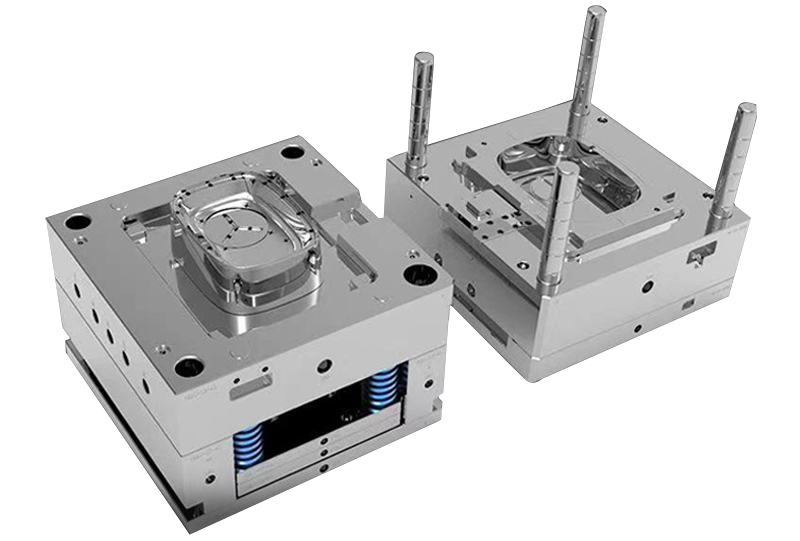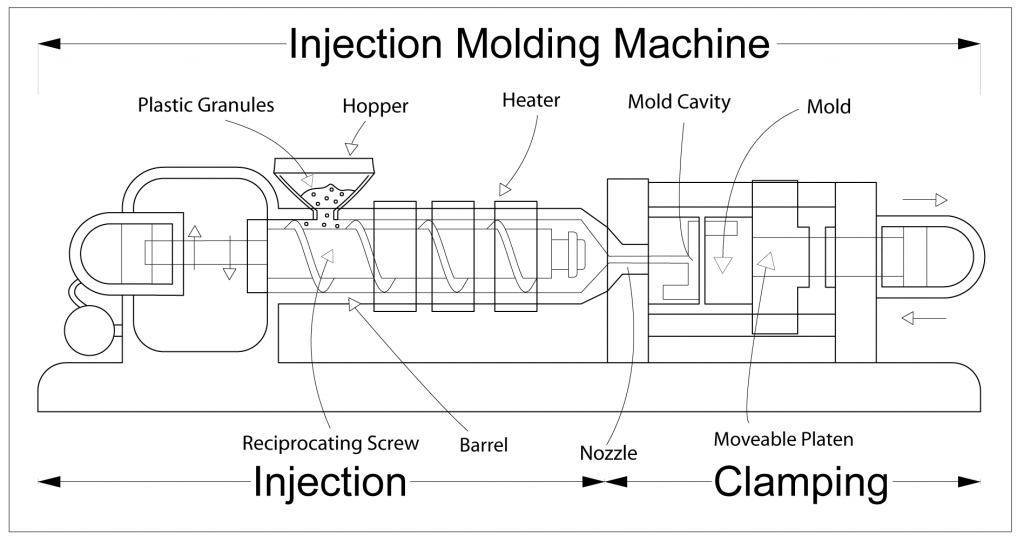The Impact of Plastic Injection Molding on Minimizing Manufacturing Costs and Waste
The Impact of Plastic Injection Molding on Minimizing Manufacturing Costs and Waste
Blog Article
Comprehending the Essentials of Plastic Shot Molding Processes
Plastic injection molding serves as a foundation of contemporary manufacturing, supplying a systematic method to producing complex elements with accuracy. Discovering these necessary components can reveal exactly how even small modifications can lead to substantial enhancements in manufacturing results, increasing questions about the potential for innovation in this established procedure.
What Is Plastic Injection Molding?
Plastic injection molding is an extensively used manufacturing procedure that transforms polycarbonate and thermosetting products into specific and complex shapes. This strategy is favored for its capacity to produce high quantities of similar components with exceptional accuracy, making it an important approach in various sectors, including automotive, durable goods, and medical devices.
The process entails thawing the selected plastic product and injecting it into a mold and mildew under high stress. The mold, created to the specs of the wanted part, allows the liquified plastic to take shape as it cools down and strengthens. As soon as the product has solidified, the mold and mildew is opened, and the completed part is expelled.
Plastic shot molding uses numerous advantages, consisting of decreased waste, consistency in production, and the ability to incorporate elaborate styles that might be testing with other making methods. In addition, it supports a broad series of materials, each supplying special homes that can be tailored for certain applications. As markets remain to innovate, plastic injection molding remains at the leading edge, enabling the development of advanced items that satisfy progressing customer demands.
The Injection Molding Process
The injection molding process is a sophisticated technique that includes a number of essential stages to create top quality plastic components. Plastic pellets are fed into a warmed barrel where they are thawed into a thick liquid. This molten plastic is after that infused under high pressure into a precision-engineered mold, which shapes the product right into the desired kind.
When the mold is filled, the plastic is enabled to cool and strengthen, taking the shape of the mold and mildew tooth cavity. Cooling time is crucial, as it affects the cycle time and the last residential properties of the molded component. After adequate cooling, the mold and mildew opens, and the finished part is ejected using ejector pins.

Products Made Use Of in Injection Molding
Different materials can be used in the shot molding procedure, each offering one-of-a-kind residential or commercial properties that cater to certain applications. One of the most commonly made use of materials include thermoplastics, thermosetting plastics, and elastomers.

Thermosetting plastics, like epoxy and phenolic resins, undertake a chemical change during the healing procedure, leading to a stiff, inflexible framework. These products are excellent for applications calling for high warm resistance and structural stability, often utilized in electric insulators and automotive parts.
Elastomers, including silicone and rubber-based products, give flexibility and durability. Their unique buildings make them suitable for applications that demand flexibility, such as gaskets and seals.
In addition, specialty materials like bio-based plastics and composites are acquiring traction for their ecological advantages and boosted efficiency features, widening the scope of injection molding applications in numerous industries. Understanding the this link residential properties of these products is crucial for choosing the proper kind for certain projects.
Benefits of Shot Molding
Shot molding sticks out as a highly reliable manufacturing process that provides various advantages for producing complex get rid of precision. Among the most substantial advantages is the capability to produce elaborate layouts that would certainly be tough or difficult to accomplish with other approaches (Plastic Injection Molding). The procedure permits for thorough attributes and limited tolerances, ensuring high-quality parts
In addition, injection molding is known for its quick production abilities, making it a perfect selection for high-volume production. Once the mold is developed, parts can be produced quickly, minimizing preparations and boosting overall productivity. This efficiency not click here for more info just reduces manufacturing expenses however additionally offers an one-upmanship on the market.
The versatility of products made use of in injection molding further improves its allure. A wide variety of thermoplastics and thermosetting polymers can be employed, permitting producers to pick materials that finest meet their certain requirements, including warm, adaptability, and strength resistance.
Additionally, the procedure reduces waste, as excess material can often be recycled and recycled. This sustainability facet adds to a minimized ecological effect, making injection molding a liable production selection. On the whole, the advantages of injection molding make it a favored technique for many markets.
Aspects Influencing Item High Quality
While various aspects can affect item high quality in shot molding, recognizing these elements is essential for achieving optimal outcomes. Trick facets include product selection, processing parameters, and mold style.
Material choice plays an important function, as various polymers exhibit unique residential properties that impact flowability, strength, and thermal stability. Inadequate product selection can bring about defects such as bending or insufficient filling.
Processing parameters, including cycle, stress, and temperature level time, must be meticulously regulated. Variations in these settings can result in incongruities partially dimensions and surface coating. For instance, excessively high temperatures might create deterioration of the polymer, while inadequate click for source pressure can lead to short shots.
Mold and mildew style is equally vital, as it figures out the flow of the molten plastic and the cooling process. Inadequately created molds may cause uneven air conditioning rates, causing recurring stress and anxieties and dimensional mistakes.

Final Thought
Finally, plastic injection molding functions as an essential production procedure that makes it possible for the efficient production of top quality components. Proficiency of the shot molding procedure, consisting of the understanding of products and the influence of various elements on product quality, is essential for achieving optimal outcomes. The benefits of this technique, such as cost-effectiveness and design flexibility, further underscore its value throughout several markets, solidifying its standing as a recommended option for high-volume manufacturing.
Plastic shot molding serves as a cornerstone of modern-day production, supplying a methodical approach to generating complicated components with accuracy.Plastic injection molding supplies a number of advantages, consisting of lowered waste, uniformity in production, and the capacity to include elaborate layouts that might be testing with various other making techniques (Plastic Injection Molding). As industries proceed to innovate, plastic shot molding stays at the forefront, making it possible for the advancement of advanced products that meet progressing consumer demands
The shot molding process is a sophisticated method that entails a number of crucial stages to generate top quality plastic parts.In final thought, plastic injection molding offers as a vital production process that allows the effective manufacturing of premium parts.
Report this page